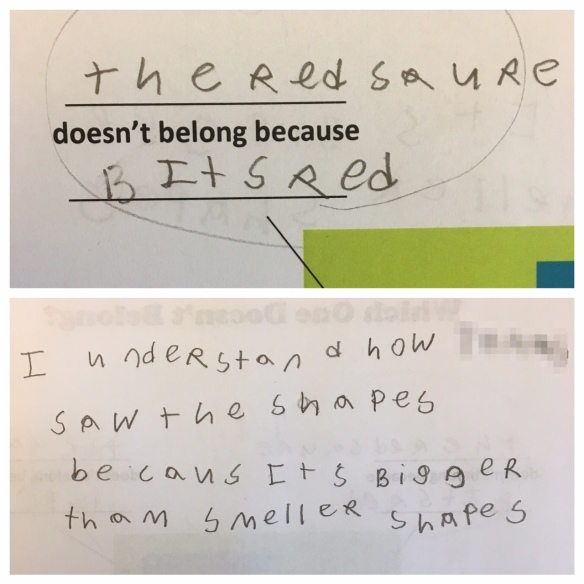We are currently studying geometry. The standards for geometry list one important understanding to develop before 4th grade, “Reason with shapes and their attributes.” If you click through the link you can read more about the specifics, but the activity that gets students reasoning about shapes and their attributes the most, in my opinion, is Which One Doesn’t Belong? This activity allows students to share their thinking about shapes and their properties without the fear of being wrong. Why? Because every answer is correct as long as you can justify your reasoning! You can read more about how I implement “Which One Doesn’t Belong?” in my class and you can use it for more than just geometry.
But this post is about how I used this activity as a basis for an instructional routine. Grace Kelemanik, Amy Lucenta, and Susan Janssen Creighton give the following seven core elements of instructional routines:
- articulation of a math practice goal
- individual think time
- partner work
- full-group discussion of ideas
- final math practice reflection
- access through multiple modalities and multiple representations
- liberal use of math practice-focused prompts
I also tried to incorporate the input of Christopher Danielson, author of Which One Doesn’t Belong?:
@bkdidact I tend not to shoot for agree/disagree. Instead, I want kids to be able to see things in new ways.
— Christopher (@Trianglemancsd) December 13, 2016
As well as input from Becoming the Math Teacher You Wish You’d Had author, Tracy Johnston Zager:
@bkdidact @Trianglemancsd @PIspeak Especially if your class has communication challenges, spending time in that work might be productive.
— Tracy Johnston Zager (@TracyZager) December 13, 2016
Which One Doesn’t Belong?
Instructional Routine

Standard: MP3 – Construct viable arguments and critique the reasoning of others
Slides: WODB Instructional Routine
Worksheet: WODB Graphic Organizer

One of my student’s reasoning shifted because she was able to identify with the viewpoint of her classmate.

Thank you for this! I’ve struggled with my routine for facilitating WODB in my high school classes, I’ll definitely use your slides. I have found that it helps to facilitate class discussions to teach students to reference the objects using quadrants I,II,III,IV.
LikeLike
I love the integration of mathematical vocabulary! That would be beneficial to some of my students and not others. I’ll integrate it for the ones that it would help! Thanks Lisa!
LikeLike
I love the specified role of the audience! Listening, making sense, and engaging with the idea being shared is just as important as doing the sharing.
LikeLike
I agree and that came from the great input I got from Tracy and Christopher in the planning process! Go #MTBoS!
LikeLike
Thank you for putting this in writing. Awesomeness!
LikeLike